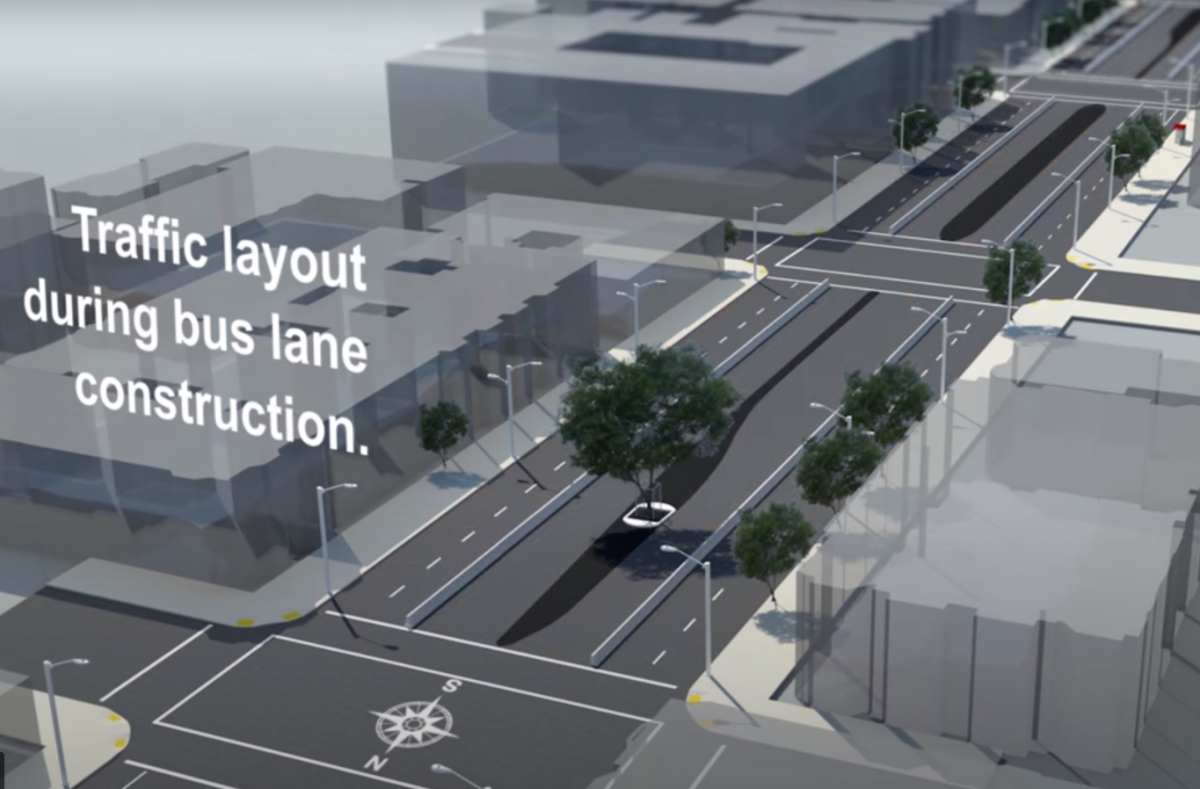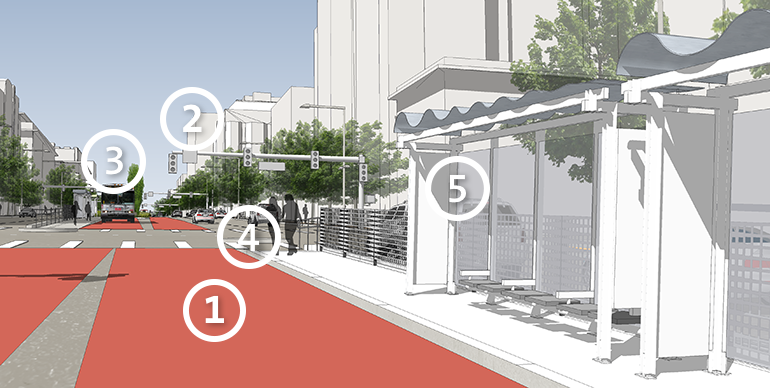By Nehama Rogozen
If you travel on Van Ness Avenue, get ready for your travel lane to shift starting next week.
Beginning on the evening of Monday, September 14, the Van Ness Improvement Project will begin shifting lanes on Van Ness Avenue so that work on the Bus Rapid Transit (BRT) system can continue in the middle of the street.
This summer, the project reached a significant milestone by completing the utilities phase and moving into the BRT buildout phase. The utilities phase focused on updating essential services that San Franciscans rely on, such as water and sewer systems, a firefighting system and street lighting. The new BRT buildout phase will include building out red transit lanes, putting in new medians and bus boarding islands, connecting new traffic signal lights, installing plants and adding an irrigation system.
On the evening of Monday, September 14, southbound lanes between Pacific and Lombard streets will move over one lane, utilizing the lane closest to the curb. On the evening of Tuesday, September 15, the same thing will happen on the northbound lanes between Pacific and Lombard streets. Work will be performed from 9 p.m. to 7 a.m. Two lanes available in each direction after the switch.

Rendering: In order to work on the BRT elements and the new medians along Van Ness Avenue, traffic will shift to the outer two lanes.
To prepare for this traffic and construction switch, we encourage finding an alternate route early and avoiding Van Ness on Monday and Tuesday nights as we make the switch.
With these changes, safety fencing will be maintained as needed. Driveway access will be mostly restored, but there may be short tasks that require temporary driveway closures, in which case advance notice will be provided.
Project Background
The Van Ness Improvement Project is building San Francisco’s first Bus Rapid Transit system. This much-needed and globally-proven solution will improve transit service and address traffic congestion on Van Ness Avenue, a major north-south arterial. The project also includes extensive utility maintenance, civic improvements and safety enhancements that minimize the need for future construction and will revitalize this historic corridor.

Features of Bus Rapid Transit on Van Ness include:
- Dedicated transit lanes that are physically separated from the other traffic lanes.
- Enhanced traffic signals optimized for buses.
- Low-floor vehicles and all-door boarding.
- Safety enhancements for people walking.
- Fully furnished boarding platforms that include shelters, seating and prediction displays.
For more information about the Van Ness Improvement Project and what to expect, or to sign up for project updates, please visit our website.
Published September 11, 2020 at 07:28PM
https://ift.tt/2Fe4jXn
Comments
Post a Comment